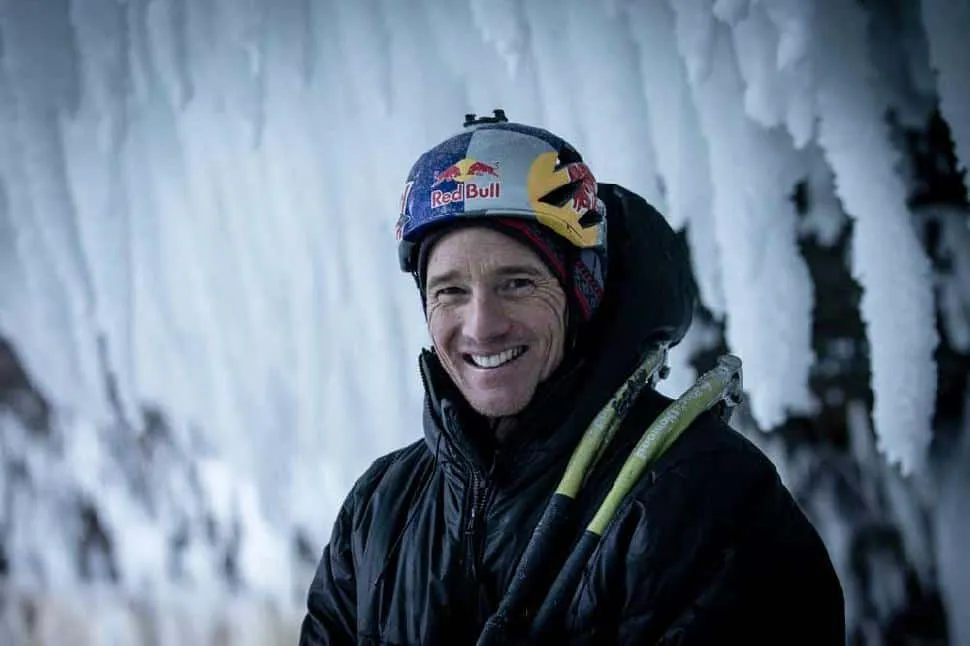Gadd’s Truth: Playing it Safer

If you want to survive out there, learn not to trust your gear.
The first skill we teach novice climbers is how to tie into the rope. This is roughly analogous to the first step a baby takes; learning to tie into the rope is the foundation from which all other skills flow. I have taught climbing for more than 30 years, and tied into ropes many thousands of times. I know I can tie my knot in a blizzard at night with a dead headlamp, because I’ve done it. I have always put the chances of my climbing knot failing alongside the odds of being hit by a meteor. It’s not going to happen.
Which is why I found it so shocking when the rope that ran through my harness suddenly leapt away from me like a dancing snake. My partner was one of the world’s top alpine climbers, Jeff Lowe, and he had just done a brilliant climb up through horrifically technical ice. I was following his lead, and I’d been moving fast, trusting shallow pick placements in thin glazes of ice because I had the rope above me. When it’s –20°C, speed is warmth and safety.
As the rope floated away from me, my world went from “Okay, move fast” to “What exactly is holding me 150 metres above the ground right now?” I was suddenly intensely conscious of every point of contact on my crampons and ice tools. The total amount of steel in the ice preventing me from taking a surely fatal fall was less than one centimetre. My life hung on the structural integrity of half an ice cube.
Jeff knew instantly that I was no longer attached to the rope, and yelled down, “Are you still there?” With all the falling ice my tools had been smashing off, he didn’t know whether the sounds he’d heard were just the ice or my body hitting the ground. I yelled back “Yes!” but it came out as a small squeak. I can still feel the first breath I remembered to take—in my terror, I had frozen like a mouse before a cat, afraid any movement would trigger fate’s sharp-clawed pounce.
Slowly my awareness expanded outward from my toes and fingers until I was able to look around and take stock of what to do. Jeff yelled that he was going to throw me the rope, but my position was so precarious that I knew I would fall off if I tried to tie in. I slowly removed one pick, tapped it in slightly higher and danced gingerly upward, knowing that every move could be my last if I got it wrong. Jeff just watched, saying nothing. He knew the climbing was technical and the hand I was playing was worth everything.
As I finally pulled over the top, my life heaved back into me one lungful at a time. After a few seconds, Jeff said two things. The first was, “You know, I almost fell off there. That was hard.” The second was something I still often think of when I’m climbing: “Most of this technical equipment is just for show. True safety means not falling off in the mountains; the gear just reminds us not to fall.”
I realized afterwards that my rope came undone because I’d tied a low-security knot backed up with a carabiner that I’d used for another purpose at some point during the climb. It happens. Many of the best climbers in the world have died because of similarly simple mistakes.
My knot error was 20 years ago, and in all the time since, I’ve never fallen off while alpine climbing. The lesson I learned that day was to rely on myself and my own abilities first, and to trust the safety systems as little as I have to. And that doesn’t just apply to my climbing. When I canoe with my family, I always check my daughter’s and my own lifejacket straps, but long before that happens, I have built the paddling and river-reading skills to minimize the risk of flipping the canoe. No matter what the adventure, I use the best possible protective systems, but the biggest margin of safety comes from my own brain and body.
Equipment will sometimes save our lives, and we owe it to our partners and ourselves to have both good knowledge and good gear. But it’s easy to push yourself too far, believing that the equipment will pick up the slack. In the end, true safety lies in not needing to depend on that gear in the first place. I’ve survived over the last 20 years because Jeff’s words were right.














